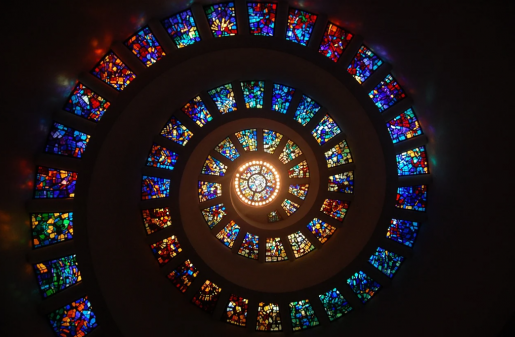A renaissance of research on psychedelics is on the rise
This is the second in an ongoing series by Center for Medical Ethics and Health Policy summer interns, undergraduate/graduate students interested in emerging ethical issues.
There is little doubt that our society has conflicting opinions about psychedelics in research and medicine. But, when and where did their use begin? How has it evolved and what’s next? What are the opportunities and concerns we all need to be aware of with the revival of experimentation following psychedelics’ complicated history? This summer I had the opportunity to work with Dr. Amy McGuire and Jill Oliver Robinson to explore this field further.
History:
Psychedelic drugs have been used for millennia, especially by indigenous groups for medicinal and spiritual purposes. The late 19th century brought about a new interest in a non-ordinary state of consciousness. Early research on psychedelics in Europe and the United States focused on the psychosis states that the drugs seemed to model. Later, scientists discovered that psychedelics paired with psychotherapy could improve alcohol and substance addictions. In 1938, lysergic acid diethylamide (LSD) was synthesized, shifting focus of psychedelic research almost entirely to LSD because of its extreme potency and remarkable effects. By the end of the 1950s, LSD was known as the miracle cure for those with alcohol addiction.
Given this success, the field of psychiatry began to embrace LSD for a range of problems. It is estimated that tens of thousands of patients were treated with psychedelic psychotherapy in the ʼ50s and ʼ60s, which eventually led to medical and then mainstream acceptance. Peak medical acceptance occurred in 1959 but then concerning ethical issues began to arise. Researchers began taking psychedelic drugs and started giving them to family, friends and even students in uncontrolled settings, which shifted psychedelic use to recreational.
Hospitalizations from a bad experience while taking psychedelics began to occur as recreational use in the general public increased. This was followed by backlash from the government in the 1970s, which brought about Nixon’s “War on Drugs” and the Controlled Substances Act, restricting not only personal psychedelic use but also research.
Culture war
In the 1990s and 2000s, psychedelic research in human subjects began once again after nonprofit organizations promoting research formed. With the ability to use new medical technology, the resurgence of research has been a global phenomenon. However, promising findings from research conflict with public sentiments and laws.
The scientific community is optimistic about the evidence of psychedelics’ positive impact on health. Psilocybin and MDMA provide many benefits to those facing substance use disorders, treatment resistant mood disorders and trauma related disorders. The FDA recently named MDMA for treatment of post-traumatic stress disorder and psilocybin for treatment of depression as breakthrough therapies, which increased psychedelic investment and research. The scientific evidence that these drugs could benefit so many has led to efforts in the field to “get psychedelics right this time around.” Institutions are keeping research and administration of psychedelics safe with rigorous ethical and safety guidelines so research can proceed and people can continue to have access to treatment, especially as negative social stigma and restrictive laws still exist.
Beyond scientific research, there are shows and documentaries touting the benefits of psychedelics. “Fantastic Fungi” and “How to Change Your Mind” on Netflix have been trending and focus primarily on the benefits of psychedelics and push for recreational use. Additionally, in recent months “psychedelic influencers” who share their psychedelic experiences have started to gain popularity on social media, often encouraging others to experiment with the drugs. This includes @findjules on TikTok, with 94,000 followers and 1.1 million likes on the app. These efforts not only raise visibility but also raise concern.
Many are concerned with the growing prevalence of what they believe to be the overhype of psychedelics. The concern comes from people who have witnessed people harmed from drugs in the past, have seen loved ones that face substance use disorders, have witnessed others experiencing harmful “trips” and more. Additionally, psychedelic studies have been shown to benefit individuals when administered in a safe and controlled setting, many people are concerned that decriminalization of psychedelics opens the door to a wider use of psychedelics, which can be dangerous to the individual when the set and setting are not considered.
Today, there is still a lack of public acceptance with psychedelics, which holds legal repercussions. Many of the negative beliefs today date back to President Nixon’s “War on Drugs,” discrimination toward racial minorities and a fear of addiction. These biases act as impediments to research that evidence has shown to be effective and beneficial, and the fear of addiction is unfounded as there is no evidence that psilocybin or LSD has addictive components. However, many still struggle with the distinction between bias and fact.
As the psychedelic movement progresses and research continues, it is important to remain rooted in fact. An emphasis must be placed on equitable access to treatment and clinical trials. Education must continue in order to reduce stigma and bring light to which groups are punished or jailed for using psychedelics and which groups are praised for ingenuity.
– By Sarah Cunningham, summer intern at the Center of Medical Ethics and Health Policy at Baylor College of Medicine and currently a rising junior at Boston College.



